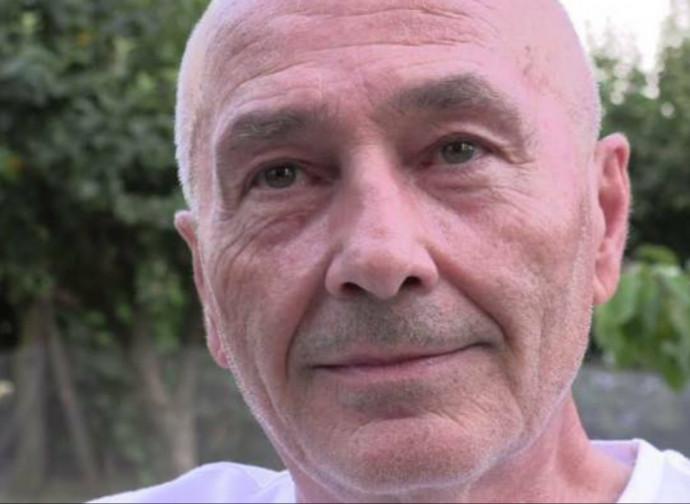NO OTHER LAND
*Prima visione 15/11 - Rai3*
Lasciamo che sia il cinema – quello che non ha paura di sporcare la pellicola con la realtà – a parlare per noi. Per una sera abbassiamo il volume delle polemiche, sospendiamo slogan e contrapposizioni, e concediamoci il tempo necessario per guardare dritto negli occhi una storia che non appartiene “a loro”, ma a tutti noi.
“NO OTHER LAND” è molto più di un documentario: è un atto di resistenza visiva. Un film nato da cinque anni di registrazioni sul campo, dal 2019 al 2024, durante i quali l’attivista palestinese Basel Adra ha filmato, abitazione dopo abitazione, la progressiva demolizione delle case considerate “abusive” dal governo israeliano. Un lavoro che diventa ancora più potente nell’incontro con lo sguardo del giornalista israeliano Yuval Abraham, e con quello dei co-registi Hamdan Ballal e Rachel Szor.
Quattro voci, quattro sensibilità, quattro sguardi che si intrecciano in un’opera che non cerca il sensazionalismo ma la verità, anche quando è scomoda, anche quando fa male. Un racconto duro, necessario, che mostra la violenza e la resistenza ma anche una rara e fragile possibilità di alleanza umana oltre le divisioni storiche e politiche.
Un merito enorme a questo gruppo di autori che dimostra – con un film e non con proclami – che l’arte può davvero diventare un terreno comune, un ponte reale in un paesaggio di muri.
Sostenuto da Amnesty International nella distribuzione e accompagnato da Medici Senza Frontiere, “No Other Land” ci consegna immagini che restano impresse come cicatrici, e parole che aprono spiragli. Un'opera che non pretende di dare risposte, ma ci invita con forza a non distogliere lo sguardo.
SABATO 15 NOVEMBRE – ORE 21:20 – RAI 3 (prima visione)
E allora sì: questa sera non dobbiamo mancare. Perché certe storie non si guardano soltanto — si attraversano insieme.
#NoOtherLand #Documentario #DirittiUmani #Rai3 #Attivismo #CinemaDelReale #Palestina #Israele
*Prima visione 15/11 - Rai3*
Lasciamo che sia il cinema – quello che non ha paura di sporcare la pellicola con la realtà – a parlare per noi. Per una sera abbassiamo il volume delle polemiche, sospendiamo slogan e contrapposizioni, e concediamoci il tempo necessario per guardare dritto negli occhi una storia che non appartiene “a loro”, ma a tutti noi.
“NO OTHER LAND” è molto più di un documentario: è un atto di resistenza visiva. Un film nato da cinque anni di registrazioni sul campo, dal 2019 al 2024, durante i quali l’attivista palestinese Basel Adra ha filmato, abitazione dopo abitazione, la progressiva demolizione delle case considerate “abusive” dal governo israeliano. Un lavoro che diventa ancora più potente nell’incontro con lo sguardo del giornalista israeliano Yuval Abraham, e con quello dei co-registi Hamdan Ballal e Rachel Szor.
Quattro voci, quattro sensibilità, quattro sguardi che si intrecciano in un’opera che non cerca il sensazionalismo ma la verità, anche quando è scomoda, anche quando fa male. Un racconto duro, necessario, che mostra la violenza e la resistenza ma anche una rara e fragile possibilità di alleanza umana oltre le divisioni storiche e politiche.
Un merito enorme a questo gruppo di autori che dimostra – con un film e non con proclami – che l’arte può davvero diventare un terreno comune, un ponte reale in un paesaggio di muri.
Sostenuto da Amnesty International nella distribuzione e accompagnato da Medici Senza Frontiere, “No Other Land” ci consegna immagini che restano impresse come cicatrici, e parole che aprono spiragli. Un'opera che non pretende di dare risposte, ma ci invita con forza a non distogliere lo sguardo.
SABATO 15 NOVEMBRE – ORE 21:20 – RAI 3 (prima visione)
E allora sì: questa sera non dobbiamo mancare. Perché certe storie non si guardano soltanto — si attraversano insieme.
#NoOtherLand #Documentario #DirittiUmani #Rai3 #Attivismo #CinemaDelReale #Palestina #Israele
🎬NO OTHER LAND🎬
*Prima visione 15/11 - Rai3*
Lasciamo che sia il cinema – quello che non ha paura di sporcare la pellicola con la realtà – a parlare per noi. Per una sera abbassiamo il volume delle polemiche, sospendiamo slogan e contrapposizioni, e concediamoci il tempo necessario per guardare dritto negli occhi una storia che non appartiene “a loro”, ma a tutti noi.
“NO OTHER LAND” è molto più di un documentario: è un atto di resistenza visiva. Un film nato da cinque anni di registrazioni sul campo, dal 2019 al 2024, durante i quali l’attivista palestinese Basel Adra ha filmato, abitazione dopo abitazione, la progressiva demolizione delle case considerate “abusive” dal governo israeliano. Un lavoro che diventa ancora più potente nell’incontro con lo sguardo del giornalista israeliano Yuval Abraham, e con quello dei co-registi Hamdan Ballal e Rachel Szor.
Quattro voci, quattro sensibilità, quattro sguardi che si intrecciano in un’opera che non cerca il sensazionalismo ma la verità, anche quando è scomoda, anche quando fa male. Un racconto duro, necessario, che mostra la violenza e la resistenza ma anche una rara e fragile possibilità di alleanza umana oltre le divisioni storiche e politiche.
Un merito enorme a questo gruppo di autori che dimostra – con un film e non con proclami – che l’arte può davvero diventare un terreno comune, un ponte reale in un paesaggio di muri.
Sostenuto da Amnesty International nella distribuzione e accompagnato da Medici Senza Frontiere, “No Other Land” ci consegna immagini che restano impresse come cicatrici, e parole che aprono spiragli. Un'opera che non pretende di dare risposte, ma ci invita con forza a non distogliere lo sguardo.
📌 📺 SABATO 15 NOVEMBRE – ORE 21:20 – RAI 3 (prima visione)
E allora sì: questa sera non dobbiamo mancare. Perché certe storie non si guardano soltanto — si attraversano insieme.
#NoOtherLand #Documentario #DirittiUmani #Rai3 #Attivismo #CinemaDelReale #Palestina #Israele












